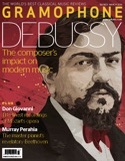Texte paru dans: / Appeared in: |
|
|
Outil de traduction (Très approximatif) |
|
|
Reviewer:
Rob Cowan
The D minor Chaconne is a case in point, a performance that honours the dancing origins of the piece (or should I say of ‘the form’), much enhanced by Feng’s ethereally detached phrasing in the instrument’s higher reaches. Alina Ibragimova is also marvellous in this respect but Feng’s extended repertoire of expressive gestures somehow draws me further into the workings of the piece. Arpeggiated passages are invariably either wistful or exciting and while colourcoding is a prominent virtue – with the Chaconne in particular – musical structure is never downplayed. Aside from Ibragimova and of course the feted ‘historicals’ (too many of those to detail in this context), there are other players on the current circuit whose Bachplaying on disc I greatly admire, violinists such as the sweet-toned Hilary Hahn (the Third Sonata and Partitas Nos 2 & 3 – Sony, 2/98) and playful Ilya Gringolts (Second Sonata and Partitas Nos 1 & 3 – DG, 11/03), both of them highly individual interpreters of this timeless music; but Feng’s manner catches my breath in the way theirs doesn’t, quite. Asked to quote just one movement as a demonstration track it would have to be the Largo from the Third (C major) Sonata, just over three minutes’ worth but a perfect sampling of Feng’s sublimely perceptive approach. Yes, there are other ways to play this music – more extrovert, or austere, or heated, or overtly virtuoso – but if you want to take Bach’s solo violin music to your heart, intimately and as food for musical thought, then Feng’s recordings strike me as well-nigh ideal. |
|




